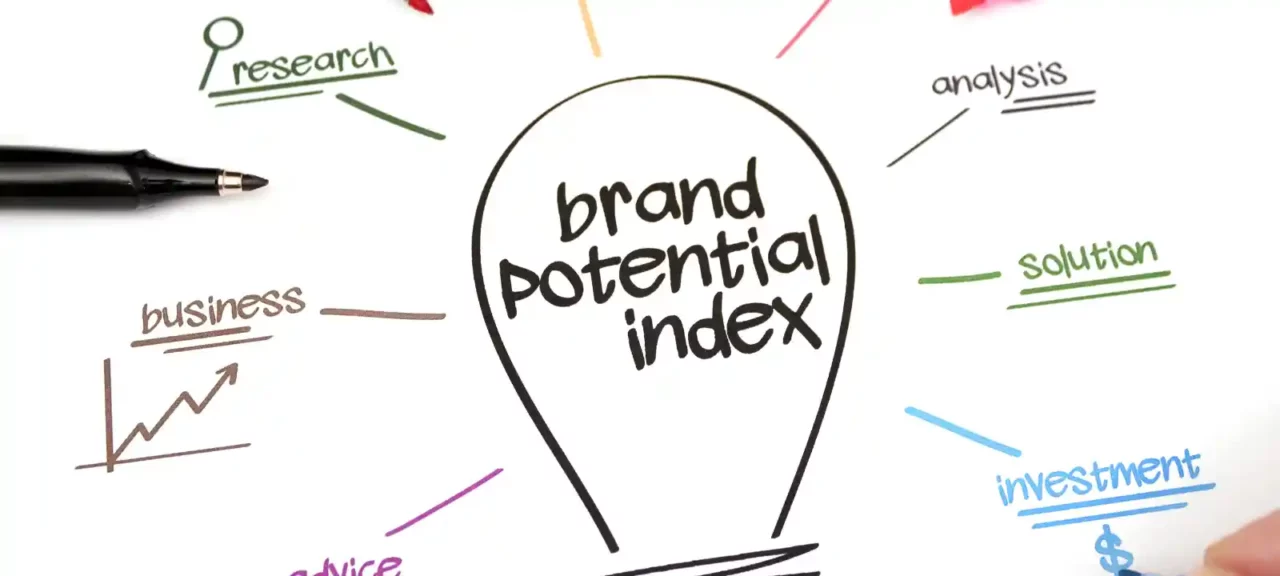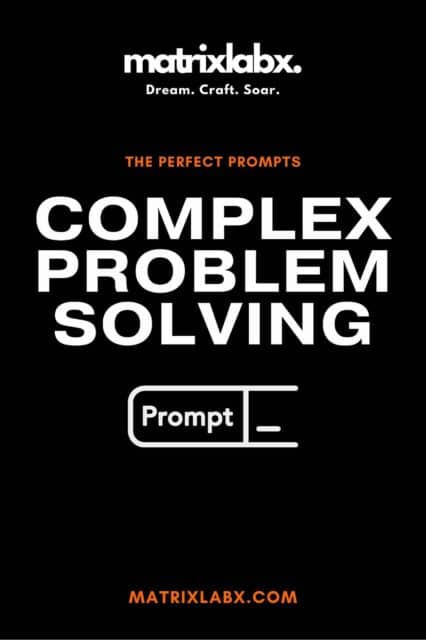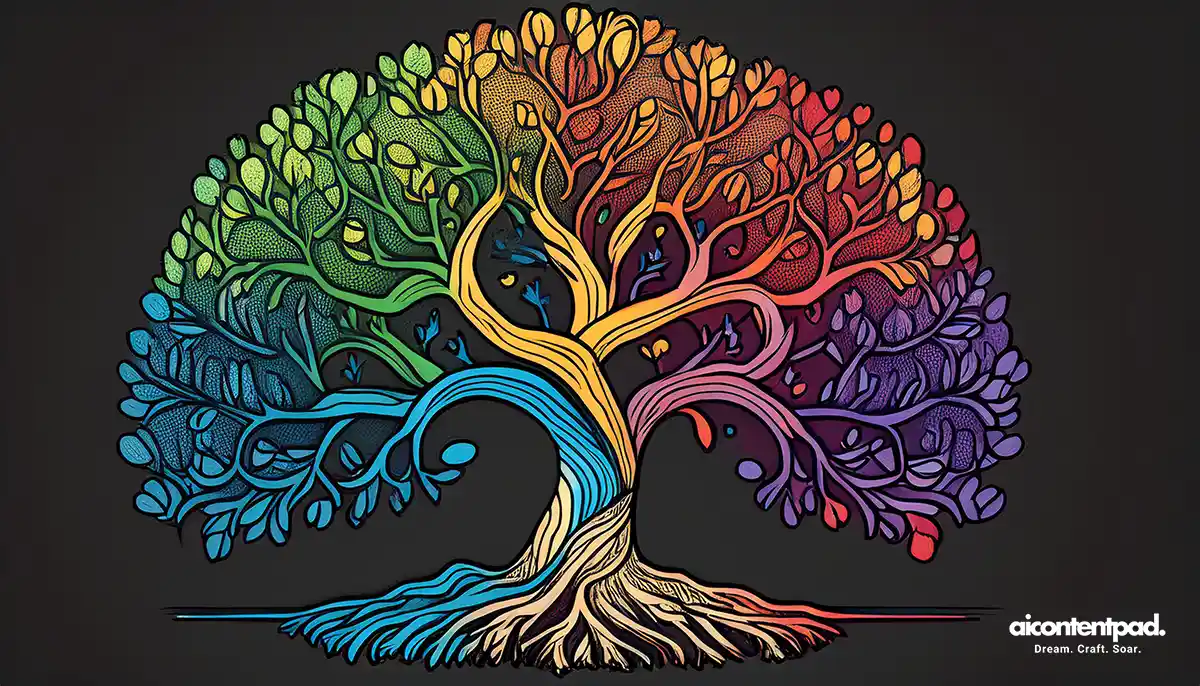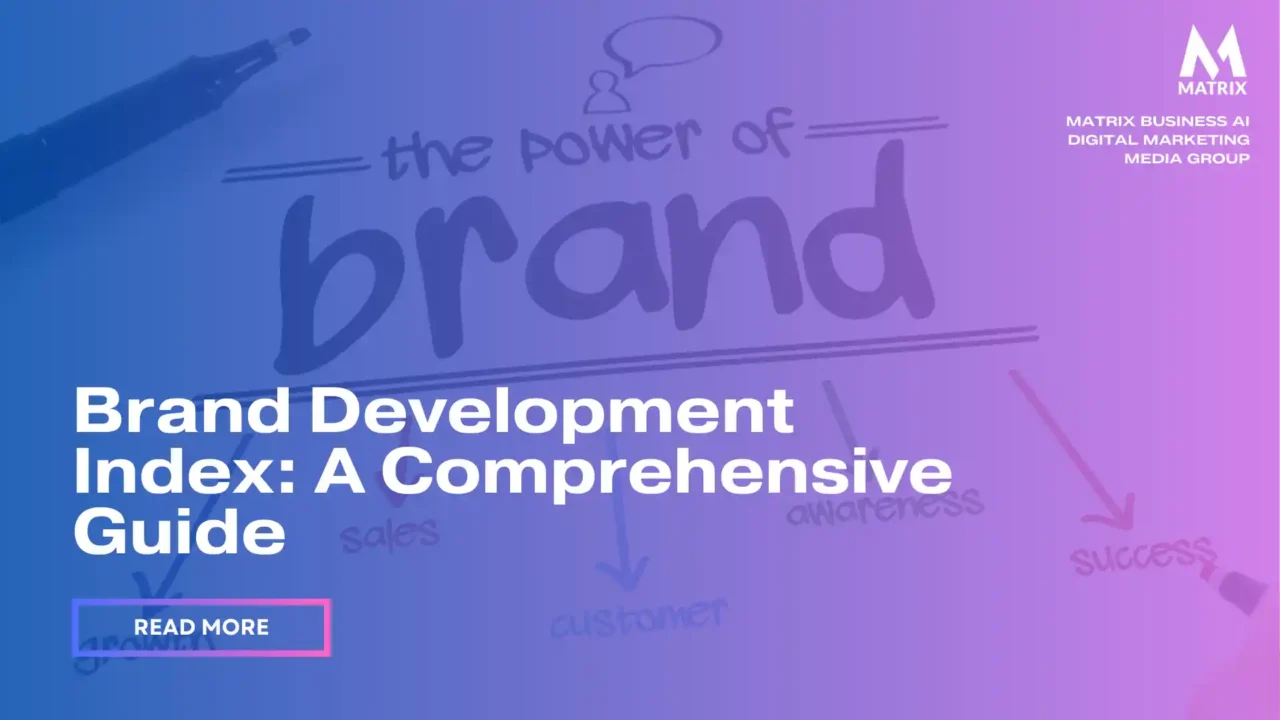What is the Brand Development Index, and How to use The BDI
What is the Brand Development Index (BDI), and how should we use it? And what is a brand development index?
If you’re a marketer looking to boost brand performance and stay atop the competition, understanding the Brand Development Index (BDI) is crucial.
Sarah was known for her creativity. As the marketing director for a mid-sized tech company, she was always brimming with new ideas. But there was one thing she tended to push to the side: the Brand Development Index. To her, BDI was just a statistic — numbers on a spreadsheet that couldn’t capture the heart of her campaigns. So, she focused on what she thought mattered most: bold visuals, catchy taglines, and social media virality.
Unfortunately, Sarah’s team was starting to notice the disconnect. Their campaigns looked good but weren’t driving engagement, and sales had plateaued. The company CEO, a data-driven strategist, wasn’t pleased. At her last review, he made it clear: if their BDI didn’t improve, there would be “changes” in the team.
Feeling the weight of her job on the line, Sarah felt lost. That’s when she ran into Emily, a content manager she had met at a Denver marketing conference a year ago. Over coffee, Sarah confided her struggles, and Emily listened intently. Finally, Emily said, “I think I have something that could help. It’s called AIBrandPad. It saved my brand’s BDI last quarter, and I think it might be exactly what you need.”
Curious and a bit desperate, Sarah agreed to a demo. Emily opened her laptop and walked her through AIBrandPad’s interface, explaining how it analyzed brand consistency, audience sentiment, and market positioning in real time. Sarah watched as Emily showed her the “Brand Diagnostics” feature, where AIBrandPad could pinpoint weak spots in brand identity, messaging, and audience alignment — all data-backed and visually mapped out.
“But this is just data,” Sarah said, unsure.
“Exactly,” Emily replied. “But it’s actionable data. AIBrandPad doesn’t just show you what’s wrong; it gives you steps to strengthen your brand. It helped me focus my creative energy in the right direction.”
Sarah was sold. She immediately applied AIBrandPad’s insights to reframe her messaging, align her visuals with audience preferences, and tweak campaigns to resonate more deeply with her target market. By the next quarterly review, the company’s BDI had climbed dramatically, and engagement was at an all-time high.
With relief, Sarah realized she’d found the balance between her creative instincts and data-driven insights. Thanks to Emily and AIBrandPad, she saved her job and transformed her brand into a powerhouse. Rethinking AI Website Design in the Age of the Algorithm
Shifting from Lead Generation to Revenue Generation: A New Era for Marketing Managers
Unlocking 67% More Revenue: The Shift Every Marketing Manager Needs to Make
In today’s fast-paced digital landscape, marketing managers are bombarded with new strategies and tools claiming to revolutionize their approach. This statistic is not just a number—it’s a call to action for marketing leaders to reevaluate their strategies and realign their efforts with the bottom line. Schedule an appointment.
The BDI can provide insights into how well your branding strategies are faring and give you actionable steps to make necessary adjustments.
However, many marketers still question the BDI and its workings. In this blog post, we’ll break down all things BDI-related so that you can immediately apply this tool to enhance your advertising efforts.
Emily had always been a star at her job as a marketing manager for a major consumer packaged goods (CPG) company. She had a knack for creative campaigns and was known for bringing fresh ideas to life, ideas that resonated with consumers and drove sales. However, there was one thing Emily always felt was a nuisance—the Brand Development Index (BDI). She knew it was important, but with her heavy workload, it seemed like one more analytical task that took time away from the fun, creative side of marketing. So, over a few months, she ignored it.
The campaign she was most proud of launched with bright, bold colors, trendy influencers, and social media buzz. The initial excitement was overwhelming. Orders surged, and Emily’s confidence soared. “Who needs BDI when the results speak for themselves?” she thought.
But as weeks passed, a strange trend started to emerge. Sales in regions where the brand had traditionally performed well began to flatline. Worse yet, some of the company’s strongest markets were experiencing declining sales. Meanwhile, other areas where the brand was never strong suddenly spiked, but those gains were unsustainable.
The CEO called her into his office one Friday afternoon. His face was neutral, but the data on the screen before him told a different story. “Emily, what happened here? Sales are all over the place. Our strongest markets are down, and we’re wasting resources in areas where we never had a foothold.”
That’s when it hit her. She had neglected to check the BDI and factor it into her targeting strategy. She hadn’t noticed the warning signs that the campaign was underperforming in regions where the brand had the most market potential. By not adjusting her strategy based on the BDI, she’d let key markets slip while diverting too much attention to areas with low brand strength.
With a sinking feeling in her stomach, Emily admitted that she’d let her passion for creativity cloud her judgment. She spent the weekend poring over data, analyzing where the campaign had gone wrong. On Monday, she presented a revised plan focusing resources on high-BDI regions and adjusting messaging to better resonate with those audiences.
It wasn’t easy, but over time, the brand recovered. Sales in their strongest markets climbed again, and Emily regained her footing. From that day forward, she never dismissed the importance of balancing creativity with the metrics that mattered. The BDI wasn’t just a boring number—it was the foundation for building a successful brand strategy.
Achieve a Competitive Edge with Precision Market Segmentation and Strategic Positioning
What industries use the Brand Development Index Most?
Measuring brand performance and making data-driven decisions to drive business growth is important. The Brand Development Index (BDI) is a valuable tool for assessing a brand’s relative performance within a specific market. It is a simple yet effective metric that can provide insights into a brand’s overall health and identify areas for improvement.
The BDI is most commonly used by consumer packaged goods (CPG) companies, but it can be applied to any industry where brand awareness and market share are important. CPG companies are particularly reliant on the BDI because their products are often sold in various retail outlets and directly compete with other brands for shelf space and consumer attention.
For example, if your brand sold 500 units in California out of 5000 units sold nationally, your percentage of brand sales in California would be 10%.
How to increase your Brand Development Index with AIContentPad.
Why the BDI is so widely used in the CPG industry:
- It is a simple and easy-to-understand metric. The BDI is calculated by dividing a brand’s sales percentage in a given market by its population. This means that even non-marketing professionals can easily understand what the BDI means and how it can be used to compare brands.
- It is a benchmark for evaluating brand performance. The BDI can compare a brand’s performance to its competitors’ historical performance, allowing brand managers to identify areas where they excel and areas where they need to improve.
- It can be used to track the effectiveness of marketing campaigns. The BDI can measure the impact of marketing campaigns on brand awareness and market share, allowing brand managers to determine the most effective campaigns and make informed decisions about future marketing investments.
If you are a brand manager in any industry, I encourage you to consider using the BDI to track your brand’s performance. It is a valuable tool for making informed decisions that drive business growth.
Your Blueprint for SEO Success in 2025
Whether you’re a business owner, marketer, or seasoned SEO professional, this guide is tailored to give you a competitive edge in the evolving digital landscape. Get SEO Pricing.
Introduction about the formula for calculating BDI.
BDI, also known as the Brand Development Index, is a key marketing metric that helps you measure the effectiveness of your brand’s marketing campaign. It’s a simple formula that involves dividing the percentage of sales in a specific market by the population in that market and then multiplying it by 100. The importance of the brand development index and understanding how to use the brand development index formula.
The formula is expressed as BDI = (percentage of brand sales/percentage of population) × 100. This calculation gives you a score that helps you understand how well your brand performs in a particular market compared to how well you’re targeting that market.
By using BDI, marketers can identify opportunities to optimize their brand’s marketing strategies and increase their brand’s presence in their target market.
The Brand Development Index (BDI) is a crucial marketing metric. It provides invaluable insights into a brand’s performance within a specific market.
It measures a brand’s relative sales strength within a market compared to its average strength across all markets. This data-driven approach allows marketers to identify areas of strength and opportunity and tailor their strategies accordingly.
Understanding the Significance of BDI

BDI measures how well your brand performs in a specific market area compared to its performance in all market areas. It identifies where your brand is over or underperforming, allowing you to allocate resources strategically. High BDI values suggest that a market is likelier to buy your product, while low BDI values indicate less likelihood.
Calculating BDI: The Formula and Required Data
Calculating the BDI requires three key pieces of data:
- Percentage of brand’s total sales in the market (Brand’s Sales %)
- Percentage of total population in the market (Market’s Population %)
- Total sales of the brand
With these data points, you can calculate the BDI using the following formula:
BDI = (Brand’s Sales % / Market’s Population %) * 100
This formula calculates the index by comparing the brand’s share of sales to the market’s population share.
Interpreting BDI Values
Interpreting BDI values involves understanding what the resulting number means for your brand.
- A BDI higher than 100 indicates that your brand’s sales are stronger than its average performance in that market. This could result from a high concentration of your target market, effective advertising, or favorable market conditions.
- A BDI lower than 100 suggests that your brand is underperforming in the market. This could be due to a smaller target market, ineffective advertising, or unfavorable market conditions.
Utilizing BDI Values in Marketing Strategies
BDI values are not just numbers but powerful tools for shaping your marketing strategies.
High BDI markets present opportunities for growth and expansion. To boost sales further, consider investing more in advertising and promotions in these areas.
Conversely, in areas with a low BDI, it might be worth reassessing your strategy. This could involve improving advertising effectiveness, tailoring your product offering, or even considering whether the market is worth the investment.
The BDI provides a snapshot of your brand’s performance in different markets, enabling you to make data-driven decisions and optimize your marketing strategies.
Remember, the future belongs to those who harness the power of data to drive their decision-making process. By calculating and interpreting your BDI, you’re taking a significant step towards leveraging this power and propelling your brand to new heights. The brand development index and category development index should be considered, too. AIProdPad Product Development Transformation Through AI-Driven Innovation [White Paper]
Explain the factors that can affect the BDI of a brand.

The BDI, measures the percentage of a brand’s sales in a particular market area against its total sales in the entire market. Several factors can affect a brand’s BDI, including the level of competition, marketing efforts, and economic conditions in the target area. For instance, more competition may cause a decrease in the BDI, whereas effective advertising and a growing economy can contribute to an increase.
Additionally, understanding the demographics and psychographics of the target audience can be crucial in determining the success of a brand’s BDI.
By effectively analyzing these factors, brand managers can make informed decisions and actively work towards achieving a higher BDI for their brand.
Content That Converts: Transparent Pricing for Maximum ROI
Explore Matrix Marketing Group’s Flexible Pricing Plans for Premium Content and Marketing Solutions Tailored to Your Goals.
Example of brand development index
The BDI is a vital marketing tool that allows businesses to evaluate the effectiveness of their brand campaigns.
It measures the brand’s performance in a specific market by comparing the percentage of sales within a target audience to the percentage of the total population the audience represents. Marketers use this metric to determine where they should allocate their advertising dollars.
The higher the BDI score, the greater the demand for a brand within a specific market – indicating that it resonates well with the target audience.
Understanding your brand’s BDI is crucial for developing a successful marketing strategy. By evaluating your BDI, you can ensure you reach your target audience effectively and allocate your marketing budget wisely.
Discuss the importance of BDI for marketers.
Understanding your customers is the key to delivering successful campaigns and improving your brand’s overall performance as a marketer. The buyer decision-making process, or BDI, is crucial in helping you achieve this by breaking down consumer behavior into three stages: awareness, consideration, and decision-making.
By analyzing each stage and identifying opportunities to influence your target market, you can create more effective marketing strategies that meet your customer’s unique needs and preferences. In the age of digital marketing, where consumers have access to more information and choices than ever, using BDI can help you stay ahead of the competition and build stronger relationships with your audience.
BDI analysis can help you better understand your customers and create more meaningful interactions that drive results.
Discuss what different BDI scores mean for a brand.
BDI scores are a powerful tool for brands looking to optimize their marketing efforts. The scores represent the percentage of a brand’s sales in a particular market compared to the overall sales in that market.
A high BDI score indicates that a brand is performing well in a specific market, while a low score suggests that the brand has room for improvement. By examining BDI scores, companies can tailor their marketing strategies to target better the markets where their brand is underperforming, resulting in increased sales and greater brand awareness.
In short, understanding BDI scores is essential for any brand looking to maximize its marketing efforts and drive growth. Content Translation Services: A Competitive Advantage for Your Business
Provide examples of brands with high and low BDI scores.
Brand Development Index, or BDI, measures the effectiveness of a company’s advertising in a specific market.
In terms of high BDI scores, Apple Inc. is a perfect illustration. Thanks to its innovative marketing campaigns that appeal to a wide audience, it has consistently secured its position as one of the most successful companies globally. Conversely, McDonald’s has struggled with low BDI scores. Despite having a strong brand, its recent advertising campaigns still need to connect with its target audience.
Consequently, they have experienced a decline in sales over the years. These examples demonstrate how the BDI score can impact the success of a brand’s marketing efforts.
It can be a valuable tool for investors and traders looking to stay on top of market trends. To calculate BDI, one must consider numerous factors, such as supply and demand, global economic conditions, and political events affecting trade routes. Digital Marketing for Solar Companies to Increase Sales
While it may seem daunting at first, with a little research and practice, anyone can learn to calculate BDI and use it as a guide for navigating the ever-evolving landscape of global commerce.
Discuss how marketers can use BDI to improve their marketing strategies.
In today’s competitive marketplace, a strong marketing strategy is more important than ever. The BDI is a key tool for improving marketers’ approaches.
BDI can be a useful measure of a brand’s performance within a particular market. By using this metric, marketers can better understand the factors driving sales and identify growth opportunities through the BDI.
The BDI has been a necessary metric in marketing for many years. It gives marketers a valuable understanding of how well their brand performs in their target audience.
By analyzing data such as sales and market share, the BDI can predict which markets will be successful and where additional marketing efforts are needed.
While it should not be the only factor considered when making marketing decisions, the BDI is an indispensable tool for evaluating and improving a brand’s performance.
Overall, the BDI provides invaluable insights into consumer behavior and enables marketers to make more informed and effective decisions to drive brand growth. What is HubSpot Consulting?
How to Increase Your Brand Development Index (BDI) with AIContentPad
The Brand Development Index (BDI) is a crucial metric for assessing how well your brand performs in a specific market relative to its overall performance. To strengthen your brand’s presence and drive engagement, AIContentPad offers powerful tools to enhance your BDI by delivering tailored, high-quality content that resonates with your audience.
This guide will walk you through how to use AIContentPad to boost your BDI effectively.
1. Understand Your BDI and Its Importance
Before diving into AIContentPad’s features, it’s essential to understand what the BDI represents:
- BDI measures the strength of a brand in a particular market segment relative to its performance across all markets.
- A high BDI means your brand is strong in a specific market, while a low BDI signals an opportunity for growth.
- It’s a key indicator for market segmentation, audience targeting, and brand growth strategies.
2. Target Audience Research with AIContentPad
One of the first steps in improving your BDI is understanding your audience in specific markets. AIContentPad can help:
- Analyze Market Data: AIContentPad uses natural language processing (NLP) and machine learning to parse market data, identifying key trends and consumer behavior specific to target regions.
- Refine Personas: Use AIContentPad to create detailed buyer personas tailored to geographic and demographic variations, ensuring that your content speaks directly to the needs and preferences of different market segments.
- Predict Audience Preferences: AI-powered analytics within AIContentPad can predict content preferences based on historical data, helping you create more engaging materials.
3. Localized Content Creation
Content localization is essential for increasing your BDI. With AIContentPad, you can:
- Generate Market-Specific Content: Use AIContentPad to generate content that aligns with regional nuances, cultural preferences, and language-specific expressions.
- Optimize Keywords for Local SEO: AISEOPad’s SEO tools allow you to integrate locally relevant keywords, improving your brand’s visibility in specific regions.
- Tailor Messaging: Adapt your messaging to different markets without losing your brand’s core identity. AIContentPad enables you to craft content that aligns with local values while maintaining a consistent brand voice.
4. Maintain Brand Consistency Across Markets
One challenge with scaling your brand across different markets is maintaining consistency. AIContentPad helps by:
- Content Guidelines Enforcement: AIContentPad can embed brand guidelines into the content generation process, ensuring that every piece aligns with your brand’s tone, style, and message.
- Automated Content Approval: The platform allows automated approval workflows, ensuring all content is vetted for brand consistency before publication.
- Multi-Channel Content Creation: AIContentPad can create content for blogs, social media, email campaigns, and more, ensuring a unified brand presence across all platforms and markets.
5. Leverage Data-Driven Content Insights
AIContentPad offers powerful analytics to monitor how your content performs in different markets:
- Content Engagement Metrics: Track which content formats, topics, and styles generate the most engagement in each region, enabling you to adjust content strategies dynamically.
- Audience Growth Metrics: AIContentPad’s dashboard allows you to monitor audience growth and conversion rates across different markets, giving you actionable insights on where to focus efforts for higher BDI.
- Predictive Analysis: AIContentPad uses predictive analysis to suggest which content will likely perform well in specific regions, helping you stay ahead of the competition.

6. Optimize Campaigns for Specific Markets
As you produce market-specific content with AIContentPad, it’s essential to optimize your marketing campaigns accordingly:
- Customized Campaigns: Use AIContentPad to create and optimize campaigns that cater to local preferences and consumption patterns.
- Dynamic Content Updates: With AIContentPad, you can update your content in real time based on evolving market trends, keeping your brand fresh and relevant.
- Personalization at Scale: Leverage AIContentPad’s AI-driven personalization tools to craft personal and relevant messages to each target market.
7. Measure BDI Progress with KPIs
Improving your BDI requires continuous tracking and measurement. Use AIContentPad’s built-in performance metrics to:
- Monitor Market Penetration: Track your brand’s growth in specific regions by comparing content engagement and conversion rates over time.
- Adjust Content Strategy Based on BDI Insights: If certain regions have a lower BDI, AIContentPad helps you adjust your content approach, targeting the right audience with the right message.
- Optimize for Long-Term Growth: Continuously refine your content strategies based on AI-driven insights to maintain and grow your brand’s presence in key markets.
8. Automate Content at Scale
Scaling content production without sacrificing quality is crucial to increasing your BDI. AIContentPad allows for:
- Automated Content Workflows: AIContentPad can streamline and automate the entire content creation process, from ideation to publication, ensuring timely, relevant, and consistent output.
- Personalized Content at Scale: Use AIContentPad to produce personalized content for different audience segments at scale, helping your brand stay connected with local markets.
- Multi-Language Support: Leverage AIContentPad’s language processing capabilities to produce content in multiple languages without requiring multiple teams, making increasing BDI in diverse markets easier.
Increasing your Brand Development Index (BDI) requires a strategic, data-driven approach, and AIContentPad offers the perfect toolkit for success. From market-specific content creation to consistent brand messaging and localized SEO, AIContentPad enables you to target the right audience, improve brand engagement, and measure your performance in different markets.
By leveraging AIContentPad’s advanced content generation, localization, and optimization features, you can improve your brand’s visibility, relevance, and strength, significantly boosting your BDI.
Start integrating AIContentPad into your content strategy today, and watch your BDI grow across all key markets!
BDI can be used to track the effectiveness of marketing campaigns.

In today’s fast-moving world, marketing campaigns are pivotal in creating brand awareness and driving sales. However, measuring and tracking a marketing campaign’s effectiveness can take time.
This is where BDI can be useful. BDI is a metric that compares the sales performance of a brand in a specific market to its potential in that market. With BDI, marketers can track how well their campaigns perform in specific markets and identify areas where they need to adjust their strategies.
This helps improve the effectiveness of marketing campaigns and ensures that resources are wisely invested in the right places.
Provide examples of how BDI has been used to improve marketing campaigns.
BDI, known as belief-desire-intention, is a powerful tool that has revolutionized marketing campaigns across various industries in recent years. One of the most notable examples of BDI’s efficacy is online advertising.
By analyzing consumer behavior and preferences, marketing teams have been able to create highly targeted advertisements that address customers’ unique needs and desires.
Further, BDI has improved the overall customer experience by tailoring promotions and discounts to specific segments of a company’s consumer base.
With so many innovative ways to implement BDI in marketing, it’s no wonder this approach is quickly becoming a staple of modern advertising strategies.
How can BDI be used to compare the performance of different brands in the same market?
Brand Differentiation Index (BDI) is a valuable tool for businesses looking to measure the effectiveness of their marketing strategies.
Through BDI, companies gain important insights into their relative market position by comparing the performance of different brands in the same market. This allows them to make more informed decisions about future marketing efforts.
BDI considers factors like brand awareness, loyalty, and advertising reach, providing a comprehensive picture of each brand’s overall performance. With this information, businesses can target their marketing efforts more effectively, focus on areas where they are falling behind their competitors, and ultimately increase their market share.
In today’s crowded and competitive marketplace, BDI can be the key to staying ahead and building a strong, successful brand.
How BDI can be used to identify markets where a brand has a strong or weak presence.
Brand Development Index, or BDI, is a powerful tool for determining the strength of a business’s brand in various markets.
By comparing the sales of a specific product within a particular region to the national average, BDI can identify areas where a brand is underperforming and those where it is outperforming.
This information can be used to adjust marketing strategies to better target those areas with weaker brand presence and capitalize on those with stronger ones. In a competitive marketplace where brand loyalty is crucial, BDI can provide valuable insights into where a brand should focus its efforts to maximize its success.
How BDI can be used to allocate marketing resources more effectively.
In today’s fast-paced marketing world, allocating resources effectively is more crucial than ever. One way to do this is by using the buyer decision index (BDI). BDI measures how much potential buyers will likely be influenced by marketing efforts.
By understanding the BDI, companies can determine which regions or markets to focus on, which channels to use, and which messages to promote. This can save time, money, and effort, allowing companies to maximize their marketing investment.
Ultimately, companies that use BDI to allocate their marketing resources effectively will be able to reach more customers in a more targeted way, driving growth and increasing revenue.
AIContentPad – On-Brand Content
AIContentPad offers numerous advantages to on-brand content and corporate governance. It enables companies to streamline communication, improve compliance, and support decision-making processes through efficient and reliable content generation.
AIContentPad provides a scalable solution that helps companies uphold and exceed governance standards. This ultimately leads to better decision-making, stronger regulatory compliance, and enhanced organizational accountability.
In conclusion
Brands need to understand the Brand Development Index and its calculation to track their success in the market. BDI is a great tool for measuring how well your brand is performing and connecting with customers. It can give marketers valuable insight into the performance of their marketing campaigns and help them improve their strategies.
It also provides insights into which brands are more successful, allowing marketers to make better strategic decisions about where to allocate their resources most effectively. Ultimately, learning about and using BDI can give marketers an edge and lead to long-term success for their brand.
Are you ready to start harnessing the power of BDI for your brand? Read more now about how you can create ideas for customer profiles for lead generation to help you take advantage of this powerful tool! Rethinking AI Website Design in the Age of the Algorithm




